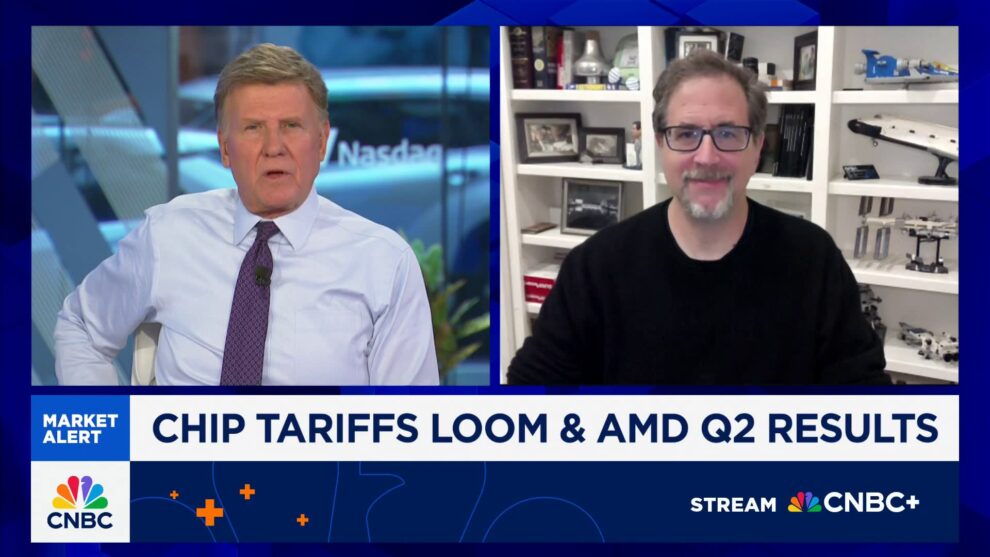Lisa Su, president and CEO of AMD, talks about the AMD EPYC processor during a keynote address at the 2019 CES in Las Vegas, Nevada, U.S., January 9, 2019.
Steve Marcus | Reuters
Shares of Advanced Micro Devices slumped more than 7% after the chipmaker‘s earnings fell short of earnings expectations and raised concerns about the timing of a restart in China shipments.
The Santa Clara, California-based company reported adjusted earnings of 48 cents per share, falling short of the 49 cents per share expected by analysts polled by LSEG.
CEO Lisa Su singled out the hit from U.S. controls on artificial intelligence chips in a call with analysts.
“AI business revenue declined year over year as U.S. export restrictions effectively eliminated MI308 sales to China, and we began transitioning to our next generation,” Su said.
For the current quarter, AMD forecasted $8.7 billion in revenue, plus or minus $300 million, versus $8.3 billion expected by analysts. The company said its guidance does not account for revenue from its MI308 AI chip designed for the China market to work around chip restrictions.
During an interview with CNBC’s “Squawk on the Street” on Wednesday, Su said the company has been working closely with the Trump administration on license requirements necessary to ship its chips to China, but took a “prudent” approach to its guide.
“From our standpoint, we think we have an extremely strong portfolio,” she said. “Tens of billions of dollars is the opportunity in a market that’s going to be, let’s call it 500 billion plus over the next few years.”
Earlier this year, AMD said it would take a $800 million hit during the second quarter as a result of chip restrictions. AMD said in July it plans to soon resume those shipments as the Department of Commerce gets set to restart application review.
Some Wall Street analysts raised concerns over how soon those shipments may begin. Analysts at Morgan Stanley called the timing of the restart in China shipments “vague,” adding that the company requires a “near terms upside in GPU” to keep its premium.
“China upside sounds like it will take time to materialize (and it sounded like we shouldn’t count too much on it even if licenses are granted), pull-forward and inventory risks remain, and opex continues to march higher which is limiting earnings leverage,” wrote Bernstein analysts.
Investors also raised concerns about the company’s datacenter business, which grew 14% to $3.2 billion and includes its central processors and graphics processing units.
“We are more guarded on the company’s ability to drive significant scale in Datacenter GPUs over time, and think operating leverage is likely to be hampered by the significant OpEx we believe is needed for the company to support its software and systems efforts tied to datacenters,” wrote analysts at Goldman Sachs.
Su said Wednesday the company is seeing strong forecasts for compute from some of its largest customers and anticipates an “inflection point” into the third quarter.
“The data center business is actually the main driver of our growth, and we look at that as the opportunity in front of us,” she added.
Despite the post-earnings move, AMD’s revenues grew 32% from a year ago to $7.69 billion and topped a $7.42 billion estimate from analysts polled by LSEG. Net income jumped to $872 million, or 54 cents per share, up from $265 million, or 16 cents per share in the year-ago period.
WATCH: Bernstein’s Stacy Rasgon on semiconductor tariffs, impact on sector and AMD Q2 results

CNBC’s Kif Leswing contributed to this article.






